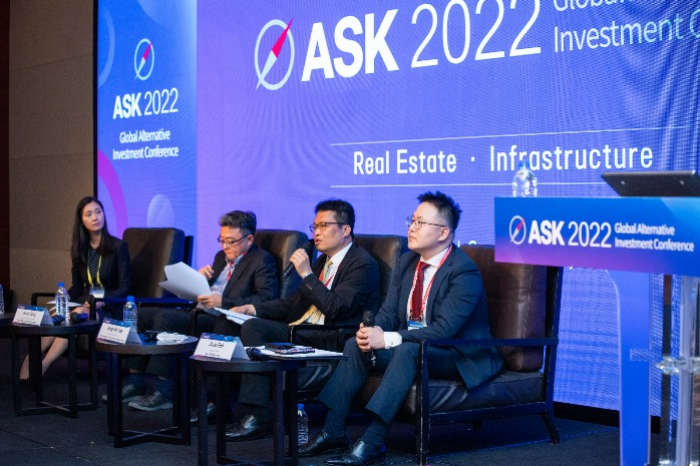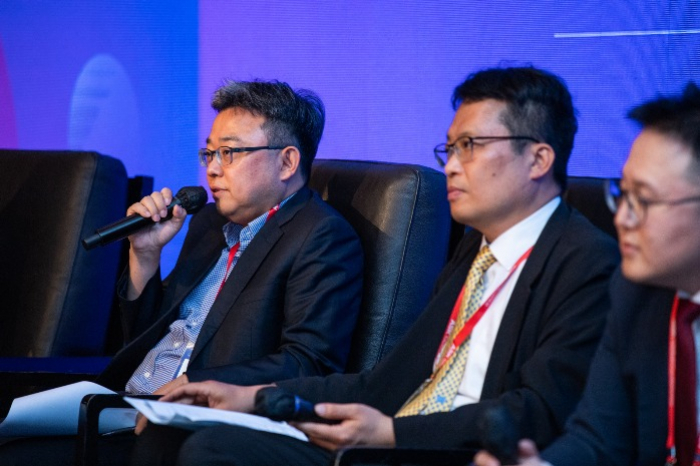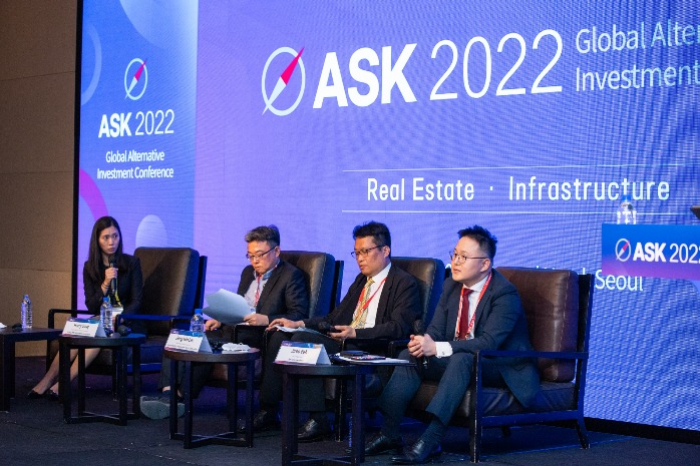Korean real estate investors look to secure liquidity post-pandemic
Asset owners should carefully observe the changes in the use of properties and take a selective approach, LPs say
By May 25, 2022 (Gmt+09:00)
LG Chem to sell water filter business to Glenwood PE for $692 million


Kyobo Life poised to buy Japan’s SBI Group-owned savings bank


KT&G eyes overseas M&A after rejecting activist fund's offer


StockX in merger talks with Naver’s online reseller Kream


Mirae Asset to be named Korea Post’s core real estate fund operator



South Korean real estate investors prefer liquidity and stable payback on investment, as well as investing in debts amid market uncertainty. The limited partners are seeing opportunities in Asia, particularly in Japan and Australia, for logistics centers, offices and residences.
In The Korea Economic Daily's alternative investment forum ASK 2022, the LP panels from Public Officials Benefit Association (POBA), Korean Federation of Community Credit Cooperatives (KFCC) and ABL Life Insurance discussed real estate market trends and their post-pandemic investment plans. The panel session was moderated by Gabriella Woo, senior director of business development at Savills Investment Management.
On recent changes in fund creation, some closed-end blind pool fund series are launching their next funds in two years, compared with three to four years in the past, said Lee Jong-min, KFCC’s real estate finance department head. It is because the previous funds promptly bought assets in COVID-19, thus deploying all the capital of the funds, Lee added.
Project-based funds are increasingly betting on pre-purchase of real estate under construction, targeting lower risks than development projects and higher returns than completed properties.
KFCC also sees more Korean major asset managers forming global blind pool funds for outbound investments, while most of them worked as fund of funds (FoFs) managers for investing in overseas general partners’ funds before, Lee said.
In terms of sectors and regions, POBA has a positive outlook on logistics centers and multifamily assets in the US while finding profitability from offices deteriorating. On his business trip to the US last month, Harry Song, POBA’s overseas real estate investment head, saw the Sun Belt region emerging rather than major gateway cities thanks to the ripple effects of remote working.

WATCH PARADIGM SHIFTS IN THE USE OF PROPERTIES
In the post-COVID-19 era, POBA will be back to its pre-pandemic strategy to bet on defensive sectors such as multifamily assets and more debts than equities. The pension scheme for provincial government officials is focusing on exits, with disinvesting from most of the global REITs and some warehouses and housing.
POBA finds real estate debts attractive as US banks are increasingly moving their capital from real estate debts to bonds, thus easing competition for the debt market. It expects growing opportunities in mezzanine debts as more equity investors need mezzanine loans, Song said.
KFCC will proactively invest in logistics centers while being more careful with investing in offices, Lee said. The paradigm in the use of workspace is shifting, and KFCC will observe the change first and then set up a new guideline for office investment, Lee added.
The majority of real estate deal proposals to KFCC are for multifamily investing. The property type showed a quick recovery from the high vacancy rate in some global core cities as well as made stable increases in rentals, which will hedge against inflation. It will put more focus on stable payback than before, as well as increase core-plus and value-add strategies in equity investments, Lee said.
ABL Life will keep global real estate investments under its two keywords, capital recycling via exits and selective investment, the Head of Real Assets Eoh Jiroo said. The insurer has expertise in residence, logistics centers and construction loans, especially in Australia, and will make bold investment decisions with which it is familiar. For the other areas, it normally invests in debts in core assets to avoid volatility, Eoh added.
The insurer will increase debt investments ahead of introducing the revised version of Korean-Insurance Capital Standards (K-ICS) effective in January 2023, which calculates the risk-based capital ratio by evaluating insurers’ assets and liabilities based on market value. For equity investment, the company will see if the upside of the property valuation is above the inflation rate and if the revenue links to price or interest rates. It is not considering mezzanine debts at the moment, Eoh said.

The panels outlined their opinions on investing in Asia. KFCC is eyeing Australia and Japan as the former has great potential with a high population growth rate and the latter boasts stable yield thanks to the low-interest rates. It is interested in logistics centers and residences in Japan and warehouses in Australia, Lee said.
ABL has the largest exposure to Australia than the other Korean insurers do and will keep increasing equity and debt investments in the country. The real estate market in Australia is undervalued compared to the US and Europe, and the private debt market offers the potential for high spreads, he said.
POBA will upgrade the plans for Asia after due diligence later this year. The pension scheme has invested in logistics centers and housing in Japan and offices and warehouses in Australia, Song said.
As of the end-2021, POBA manages 19 trillion won ($15 billion) in assets. Its alternative investment account for 73% of the AUM, and overseas real estate reaches 4 trillion won. KFCC, a Korean community bank with 70 trillion won of AUM, is managing 28 trillion won for alternative assets. The overseas real estate amounts to 1.5 trillion won. ABL Life, China’s Dajia Insurance Group’s Korean unit, has 20 trillion won of AUM. It allocates 4 trillion won in alternative assets, and overseas real estate reaches 1.7 trillion won.
Write to Si-Eun Park at seeker@hankyung.com
Jihyun Kim edited this article.
-
 ASK 2022POBA targets upper-middle market in North America for PD investment
ASK 2022POBA targets upper-middle market in North America for PD investmentMay 23, 2022 (Gmt+09:00)
2 Min read -

-
 Pension fundsPOBA targets PE in tech, bio, healthcare in long term, CIO says
Pension fundsPOBA targets PE in tech, bio, healthcare in long term, CIO saysMay 09, 2022 (Gmt+09:00)
6 Min read -
 Alternative investmentsABL Life co-invests in Everbright’s infra fund with 13% return
Alternative investmentsABL Life co-invests in Everbright’s infra fund with 13% returnFeb 03, 2022 (Gmt+09:00)
1 Min read -
 Pension fundsKFCC to increase alternative assets to 40% in three years
Pension fundsKFCC to increase alternative assets to 40% in three yearsDec 28, 2021 (Gmt+09:00)
2 Min read


